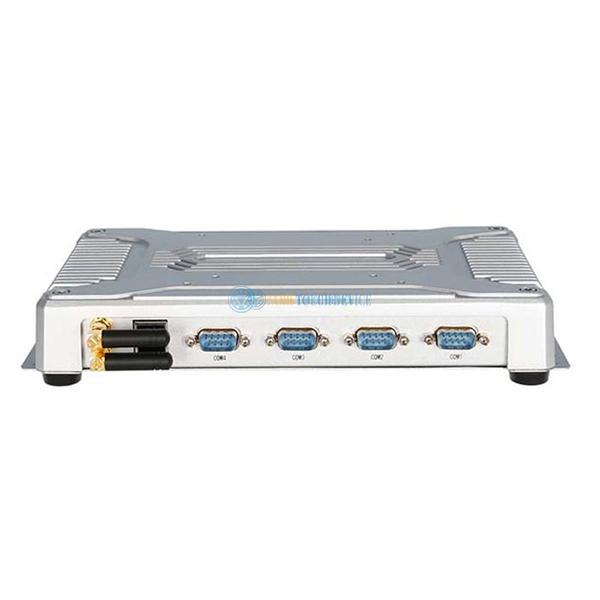Welcome STARK TOUCH DEVICE!
Solutions
Cleaning methods for gold fingers of industrial control computer graphics cards
Effective Cleaning Techniques for Industrial Computer Graphics Card Gold Fingers
Industrial computing environments expose graphics cards to dust, oil, and oxidation, which degrade the electrical conductivity of gold fingers—the critical contact points between the card and motherboard. Proper cleaning ensures stable performance and prevents system failures. Below are practical methods tailored for industrial settings.

Identifying Common Contamination Types
1. Oxidation Layers
Gold fingers in industrial PCs often develop a dull, brownish tint due to prolonged exposure to air and humidity. This oxidation creates a resistive layer that disrupts signal transmission. Use a magnifying glass to inspect for uneven discoloration or pitting, which indicate severe oxidation requiring aggressive cleaning.
2. Oil-Based Residues
Machinery lubricants or airborne grease can coat gold fingers, forming a sticky film that attracts dust. This hybrid contamination (oil + particulates) is common near manufacturing equipment. Test for oil presence by wiping a cotton swab across the surface—if it leaves a translucent streak, oil is the primary contaminant.
3. Particulate Buildup
Fine metal shavings or conductive dust from industrial processes can accumulate on gold fingers, causing intermittent contact. These particles often embed into microscopic grooves on the gold plating. Use compressed air at low pressure (≤0.3 PSI) to dislodge loose debris before deeper cleaning.
Gentle Physical Cleaning Methods
1. Eraser Technique for Light Oxidation
A soft, non-abrasive eraser (e.g., vinyl or art gum) is ideal for removing mild oxidation without damaging the gold layer. Hold the eraser at a 45-degree angle and apply light pressure, moving in a single direction along the gold fingers’ length. Rotate the eraser frequently to avoid re-depositing residue. After erasing, use a microfiber cloth to wipe away eraser crumbs.
2. Brush-and-Blow Combination for Particulates
For dust-heavy environments, start with a soft-bristled brush (e.g., anti-static paintbrush) to dislodge particles from crevices. Follow with a low-pressure air blast from a canned air duster, keeping the nozzle 2–3 inches away to prevent static discharge. This method is effective for graphics cards in servers or CNC machine control units.
3. Cotton Swab Precision for Edge Contamination
Gold fingers near PCIe slot edges often accumulate residue that brushes miss. Dip a cotton swab in 70% isopropyl alcohol (IPA) and gently roll it along the edges, focusing on the transition zone between the gold plating and PCB substrate. Avoid excessive moisture—wipe away any drips immediately with a dry swab.
Chemical Solutions for Stubborn Contamination
1. Isopropyl Alcohol for Oil and Oxidation
For moderate oil or oxidation, IPA dissolves residues without corroding the gold layer. Dampen a lint-free cloth with IPA (never pour directly onto the card) and wipe the gold fingers in a single stroke. Repeat with a clean section of the cloth until no residue transfers. Allow 5 minutes for complete evaporation before reinstalling.
2. Mild Acidic Solutions for Heavy Oxidation
Severe oxidation may require a diluted acidic cleaner (e.g., 5% white vinegar solution). Apply the solution to a cotton swab and dab it onto oxidized areas, letting it sit for 30 seconds to penetrate the layer. Gently scrub with a soft brush, then neutralize the acid by wiping with a damp IPA-soaked cloth. Dry thoroughly with compressed air.
3. Contact Cleaner Sprays for Hybrid Contamination
Aerosol contact cleaners (non-flammable, plastic-safe formulas) combine solvents and lubricants to tackle oil-particle mixtures. Spray a short burst onto a microfiber cloth (not directly on the card) and wipe the gold fingers. The solvent evaporates quickly, leaving a thin protective film that repels future contamination.
Advanced Techniques for Critical Applications
1. Ultrasonic Cleaning for High-Precision Needs
In pharmaceutical or semiconductor manufacturing, where contamination tolerance is near-zero, ultrasonic cleaning offers unmatched thoroughness. Submerge the graphics card (with non-electronic components sealed) in a bath of deionized water and mild detergent, then activate the ultrasonic transducer for 3–5 minutes. Rinse with distilled water and dry in a low-humidity environment.
2. Electrochemical Stripping for Damaged Plating
If the gold layer is worn or uneven, electrochemical stripping can restore conductivity. This process requires a specialized setup with a platinum cathode and a gold-specific electrolyte solution. It’s typically performed by PCB repair shops and is cost-effective for high-value industrial cards.
3. Conformal Coating for Long-Term Protection
After cleaning, apply a thin layer of acrylic or silicone conformal coating to the gold fingers (excluding contact areas). This barrier repels oils and reduces oxidation rates. Use a precision brush or aerosol spray, ensuring even coverage without bridging adjacent pins. Cure the coating per manufacturer instructions before installation.
Environmental and Operational Precautions
1. Static Control Protocols
Always wear an ESD wrist strap grounded to the chassis when handling graphics cards. Work on an anti-static mat, and avoid synthetic clothing that generates static. In dry environments (relative humidity <30%), use a humidifier to reduce static buildup during cleaning.
2. Humidity and Temperature Management
Store spare graphics cards in sealed bags with desiccant packs to prevent moisture absorption. When cleaning, ensure ambient temperature is between 15–30°C (59–86°F)—extreme cold can cause condensation, while heat accelerates solvent evaporation, leaving residues.
3. Scheduled Maintenance Cycles
In dusty industrial settings (e.g., textile mills), clean gold fingers every 3–6 months. For cleaner environments (e.g., laboratory control rooms), annual cleaning suffices. Log cleaning dates and contamination types to identify trends and adjust maintenance frequency accordingly.
By combining these methods with proper environmental controls, industrial operators can maintain graphics card reliability in demanding settings, minimizing downtime and repair costs.


